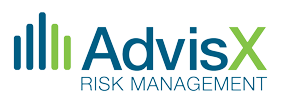2017 is now gone, but it’s always worth a look back to see where you’ve been. Here’s a look at the top 5 most popular AdvisX blog posts of 2017.
 1. The Elephant in the Room: Fair Lending Regression Analysis
1. The Elephant in the Room: Fair Lending Regression Analysis
We’ve all heard the expression, “how do you eat an elephant? One bite at a time.” The inventor of this phrase must have been marooned and starving on an elephant-infested island, because seeing an elephant and wondering, “how am I going to eat that thing?” is not exactly a normal reaction. Even an avid steak-eater likely doesn’t see a cow and immediately wonder how to eat it. But however it happened, someone noticed that attempting to eat the world’s largest land animal in one go would be a challenge, and was wise enough to point out that taking a large task one small step at a time is much less daunting. When it comes to fair lending, you may be looking at a mountain of data and wondering how on earth you can sift through it all to come up with anything meaningful. The good news is that there’s an even better way of doing it than taking it one bite at a time, and that way is regression analysis… Continue reading.
 2. Comparative File Review: See the Whole Iceberg
2. Comparative File Review: See the Whole Iceberg
It’s common knowledge that the part of an iceberg that can be seen above the surface is just a small portion of the whole iceberg. In fact, about 90 percent of the iceberg is hidden below the water’s surface. If you are trusting your fair lending risk to just the data visible on the surface, there is a lot that you’ll miss. A regression analysis can be used to see more of your data that is hidden below the surface, but if your regression analysis suggests any areas of concern, it may be time to do a deeper dive and get a view of the whole iceberg to see if those concerns do indeed have a legitimate explanation. The best way to do that is with a comparative file review… Continue reading.
 3. New York’s 504: BSA/AML Requirements You May Want to Start Wearing
3. New York’s 504: BSA/AML Requirements You May Want to Start Wearing
If you’re a fashion fanatic and you want to get a jump on what will be hot next season, you’d probably want to look to the current fashion trends in New York. After all, New York, New York is known as one of the fashion capitals of the world. Now, if you’re in charge of BSA/AML compliance at your financial institution, your regulators will not be amused if you’re behind on anti-money laundering efforts, even if your compliance team looks ready to walk the runway. They’ll expect you to make sure that your institution is dressed in the latest and greatest practices, procedures, and equipment to detect and monitor suspicious activity. To do a good job of that, it’s helpful to know what’s on the horizon for anti-money laundering efforts… Continue reading.
 4. Beneficial Ownership and the Dark Side of the Moon
4. Beneficial Ownership and the Dark Side of the Moon
In the world of Bank Secrecy Act (BSA) and Anti-Money Laundering (AML), it all comes down to perspective. For many financial institutions, the perspective sometimes becomes locked down tight. Day in and day out, the systems look at the same things over and over again. In a sense, it’s like they’re looking at one side of the moon, ignoring what’s on the other side because it is harder to see… Continue Reading.
 5. How to Optimize Your AML System (Without Hiring Sherlock)
5. How to Optimize Your AML System (Without Hiring Sherlock)
One of the defining characteristics of Sherlock Holmes (besides the deerstalker hat and overcoat) is his almost superhuman powers of deduction. In the first Sherlock novel, A Study in Scarlet, Holmes says, “From a drop of water, a logician could infer the possibility of an Atlantic or a Niagara without having seen or heard of one or the other.” In every Sherlock story since, Sherlock does indeed turn tiny, seemingly insignificant details into solved crimes. Now, if you’re tasked with evaluating a Bank Secrecy Act Anti-Money Laundering (BSA/AML) system, you might feel like you’re being asked to perform Sherlockian levels of deduction. Or worse yet, you may be fooling yourself into thinking you have the fictional skills it would take to evaluate and optimize your AML system by looking solely at the number of alerts your AML system generates… Continue Reading.





